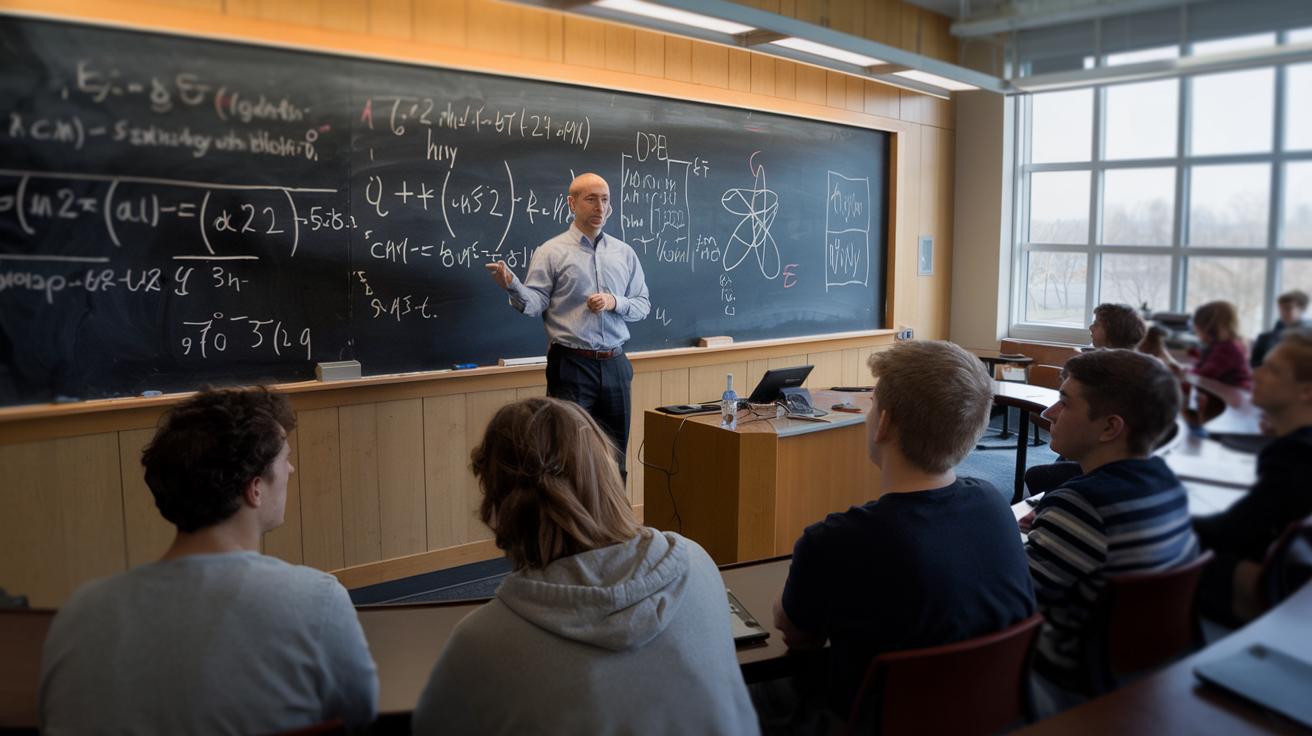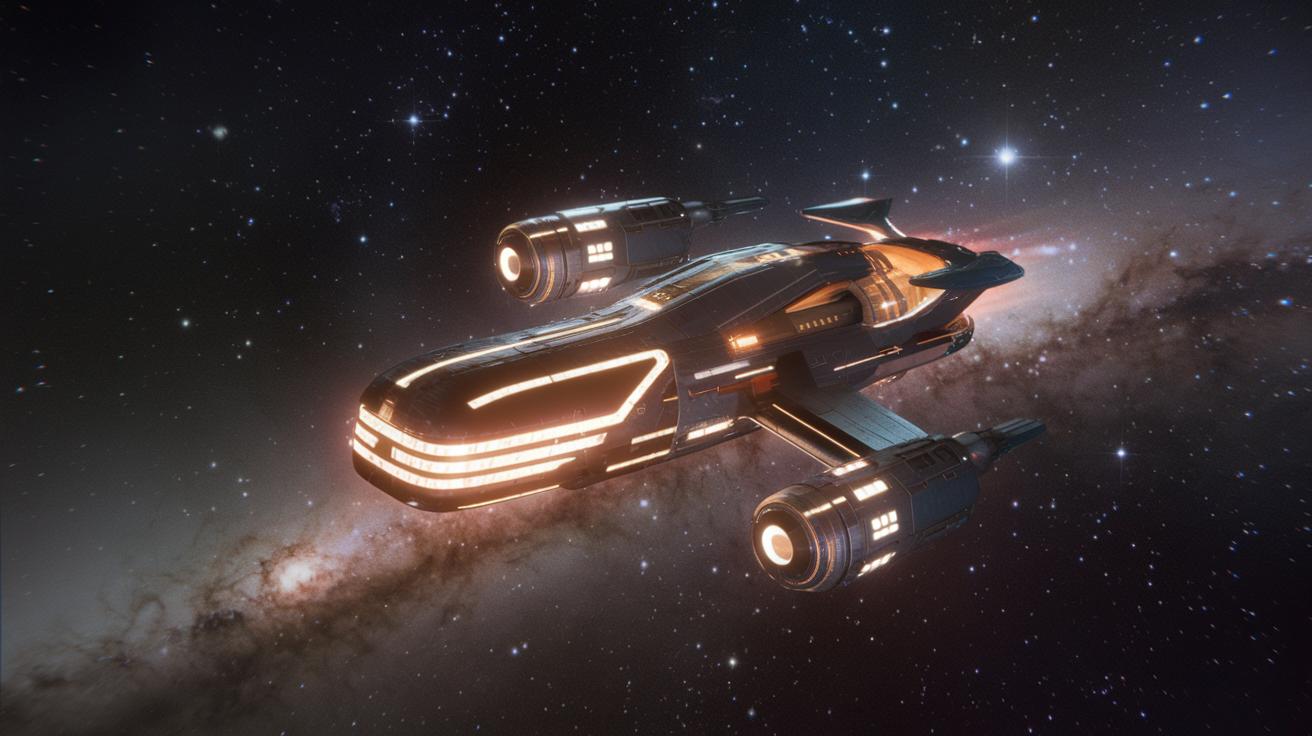What if reaching the speed of light wasn't just a staple of science fiction, but a tangible possibility? Light-speed travel tantalizes the imagination, blurring the boundaries of time and space. Standing as nature’s ultimate speed limit at 299,792,458 meters per second, the concept challenges foundational physics and introduces profound implications for our universe. This article ventures into this theoretical realm, examining the underpinning science of light’s speed, its significance in modern physics, and the insurmountable challenges faced by aspiring cosmic travelers. Could humanity's destiny eventually pierce through the constraints of our known cosmic speed limit?
Understanding the Speed of Light and Its Implications

The speed of light in a vacuum, approximately 299,792,458 meters per second, is a fundamental constant in physics. This speed is not only a measure of how fast light travels but also serves as a cornerstone for understanding the behavior of the universe. As a constant, it provides a reliable measure for calculations in various scientific fields, influencing everything from the precision of GPS systems to the fundamental equations of electromagnetism. Its constancy helps maintain uniformity in physical laws across different contexts and frames of reference, providing a stable framework for scientific inquiry.
The speed of light is often referred to as the "cosmic speed limit" because it represents the maximum speed at which information and matter can travel through space. According to Einstein's Theory of Relativity, no object with mass can reach or exceed this speed due to the requirement of infinite energy. This limit has profound implications on how we perceive time and space, affecting our understanding of causality and the structure of the universe. It delineates the boundary between what is physically possible and what remains theoretical, guiding physicists in exploring the laws of nature.
- Light travels at 299,792,458 meters per second in a vacuum.
- Nothing can exceed the speed of light due to infinite energy constraints.
- The speed of light is integral to Einstein's Theory of Relativity.
- It influences time dilation and length contraction phenomena.
- It serves as a reference point for defining the meter in the International System of Units.
The speed of light underpins many modern physics theories, serving as a benchmark for exploring the fabric of the universe. Its role in relativity has redefined our understanding of time, suggesting that time itself is not an absolute constant but can vary depending on the observer's relative motion. This insight has led to groundbreaking discoveries in theoretical physics, such as black holes and the expanding universe, and continues to drive research in cosmology and quantum mechanics. Understanding this constant is crucial for advancing our knowledge of the universe's fundamental laws.
Einstein's Theory of Relativity and Light-Speed Travel

Einstein's Theory of Relativity, comprising both special and general relativity, revolutionized our understanding of physics by introducing concepts such as the interwoven nature of space and time. Special relativity, in particular, posits that the laws of physics are the same for all non-accelerating observers and introduces the constancy of the speed of light in a vacuum. This theory fundamentally altered the perception of time and space, illustrating that they are not fixed but relative to the observer's velocity.
As an object approaches the speed of light, its relativistic mass increases, leading to significant changes in energy requirements. According to the equation (E=mc^2), the energy needed to accelerate an object increases with its mass. Near light speed, this means an exponential increase in energy demand, approaching infinity as the object's speed nears the speed of light. Practically, this signifies that any object with mass requires infinite energy to reach light speed, rendering such travel unattainable with current understanding and technology.
Time dilation is a profound relativistic effect that arises as speeds approach that of light. This phenomenon implies that time would pass more slowly for a traveler moving at relativistic speeds compared to an observer at rest. For instance, a journey to a distant star at near-light speed might feel like a short duration to the traveler, while years pass for those remaining on Earth. This discrepancy challenges conventional notions of time, suggesting that time is not absolute but a variable dependent on relative motion.
Length contraction is another relativistic effect, where the dimensions of objects in the direction of travel appear shorter to an observer moving at near-light speed. This contraction becomes more pronounced as speed increases, altering the traveler's perception of space. Such relativistic effects illustrate the malleability of space and time under special relativity, fundamentally challenging the way we understand movement and distance in the universe. These concepts not only redefine physical boundaries but also provide a framework for considering the limits of space travel and the nature of reality itself.
Hypothetical Scenarios and Challenges of Light-Speed Travel

Hypothetical scenarios for achieving light-speed travel often involve concepts such as wormholes and warp drives. Wormholes, theoretically, are tunnels connecting disparate points in space-time, potentially allowing for instantaneous travel across vast cosmic distances. While no empirical evidence supports their existence, they remain a popular subject in theoretical physics and science fiction. Warp drives, inspired by the Alcubierre Drive concept, propose bending space-time around a vessel to achieve faster-than-light travel without violating the cosmic speed limit. Both ideas, while fascinating, currently reside in the realm of speculation, requiring breakthroughs in our understanding of space-time and exotic matter.
The energy requirements for traveling at the speed of light present significant technological challenges. According to Einstein's theory, as an object with mass accelerates toward light speed, the energy needed increases exponentially, approaching infinity. This requirement translates into astronomical energy demands, far beyond our current technological capabilities or energy generation methods. Developing propulsion systems capable of these energy outputs remains a fundamental challenge for physicists and engineers, necessitating advancements in energy storage, conversion, and management technologies.
- Infinite energy requirement for objects with mass to achieve light speed.
- Lack of technology to safely manipulate space-time for warp drives or wormholes.
- Potential need for exotic matter or negative energy, which are not currently available.
- Significant gaps in understanding the fundamental physics of space-time.
These hypothetical scenarios push the boundaries of current physics, challenging established laws and our understanding of the universe. They raise questions about the nature of space-time, energy, and the very fabric of existence, prompting ongoing research and debate in theoretical physics. While practical application remains distant, the pursuit of these ideas continues to inspire scientific inquiry and the quest to understand the universe's limits.
What Would Happen Traveling at Light Speed?

Time dilation is a fundamental aspect of Einstein's Theory of Relativity, profoundly affecting the perception of time for those traveling at light speed. According to the theory, as an object approaches the speed of light, time slows down relative to an observer at rest. This phenomenon means that a journey that feels like a few moments to the traveler could span years for someone on Earth. This effect challenges the traditional understanding of time as a constant, highlighting its variability based on relative motion and velocity. Time dilation not only alters the experience of time for travelers but also has significant implications for synchronization and communication over interstellar distances.
Length contraction is another relativistic effect experienced at light speed, impacting the spatial dimensions perceived by the traveler. As an object moves closer to light speed, its length contracts along the direction of motion, appearing shorter to an outside observer. This phenomenon is a direct consequence of the constancy of the speed of light and the relativistic equations that govern space-time. Length contraction emphasizes the non-absolute nature of space, suggesting that the universe is experienced differently at relativistic speeds. This contraction impacts how distances are measured and perceived, potentially affecting navigation and mapping in space travel scenarios.
| Effect | Description |
|——————-|—————————————————————————–|
| Time Dilation | Time slows for travelers at light speed compared to outside observers. |
| Length Contraction| Objects appear shorter in the direction of travel at light speed. |
The theoretical implications of these effects are profound for interstellar travel. If humans could travel at light speed, the journey would fundamentally alter their experience of time and space, leading to a reality where returning to Earth might mean arriving centuries in the future. These relativistic effects necessitate new frameworks for understanding travel, communication, and existence across vast cosmic distances. As such, they continue to intrigue and challenge physicists, providing a glimpse into the complexities of high-velocity travel and the very fabric of the universe.
The Future of Light-Speed Travel and Space Exploration

Current research into light-speed travel remains largely theoretical, as existing technology and physics create significant barriers to achieving such velocities. Advances in propulsion techniques are a primary focus, with scientists exploring methods that could potentially enable speeds approaching the speed of light. Concepts like ion propulsion, nuclear thermal propulsion, and antimatter engines are being investigated for their ability to provide the immense energy required for long-duration space travel. These technologies, while promising, are still in experimental stages and require substantial development before practical application.
Potential breakthroughs in propulsion technology could revolutionize space exploration, allowing humans to reach distant celestial bodies far beyond our solar system. Achieving near-light-speed travel could drastically reduce travel times, making interstellar missions feasible within a human lifetime. These advancements would not only enhance our ability to explore the cosmos but also deepen our understanding of the universe's structure and origins. As research progresses, the possibilities for discovering new planets, resources, and even life forms increase, paving the way for unprecedented exploration opportunities.
- Develop propulsion systems capable of near-light-speed travel.
- Overcome energy generation and storage challenges for long missions.
- Explore potential for manned missions to exoplanets.
- Address the effects of relativistic travel on human physiology.
- Establish international cooperation for large-scale exploration projects.
The role of light-speed travel in shaping humanity's exploration of the cosmos is profound. By pushing the boundaries of our technological limits, we can envision a future where humans explore beyond the confines of our solar system. Such advancements could redefine our place in the universe, offering new perspectives on existence and the potential for life beyond Earth. As we strive toward these ambitious goals, the quest for light-speed travel will continue to inspire innovation and scientific discovery, driving humanity toward a new era of space exploration.
Final Words
Examining the speed of light reveals it as the universe's constant and cosmic speed limit, integral to our understanding of physics and reality. Einstein's Theory of Relativity highlights how mass and energy interconnect at light speed, making such travel theoretically unattainable for matter with mass.
Hypothetical scenarios, like wormholes and warp drives, underscore the formidable energy and technological challenges ahead. Time dilation and length contraction underscore profound shifts in perception for light-speed travelers.
Continuing research in propulsion technologies fuels hope for breakthroughs, potentially reshaping humanity's journey across the cosmos. What would happen if we traveled at the speed of light remains a fascinating question, sparking imagination and scientific inquiry.
FAQ
How much time would pass on Earth if you traveled at the speed of light for a year?
If you traveled at the speed of light for a year, significantly more than one year would pass on Earth due to time dilation. The exact time depends on precise relative velocities ignored in this hypothetical scenario.
Would you die if you traveled at the speed of light?
Traveling at the speed of light entails theoretical scenarios beyond current human survivability, requiring infinite energy and facing extreme relativistic effects, making survival improbable based on known physics laws.
How much time would pass on Earth if you traveled at the speed of light for 5 or 10 years?
Whether for 5 or 10 years, time dilation would mean significantly more time passes on Earth compared to your perception, illustrating severe temporal differences in relativistic physics.
What can travel at the speed of light?
Photons, the particles of light, travel at the speed of light in a vacuum. Objects with mass require infinite energy and thus cannot achieve this speed according to relativity.
Can we travel at the speed of light in the future?
Current physics laws suggest light-speed travel is impossible for mass-bearing objects. Research in advanced propulsion and theoretical physics might hold future possibilities for overcoming such limitations.
What happens if an object travels faster than the speed of light?
If an object could travel faster than light, it would violate causality principles according to relativity, leading to paradoxes, as this contradicts established physical theories.
Could a human survive traveling at the speed of light?
A human couldn't survive traveling at light speed due to infinite mass and energy requirements, alongside destructive relativistic effects impacting any matter subjected to such conditions.


